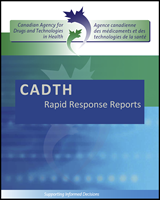Body temperature can be measured in a number of ways. Traditionally, body temperature has been measured using contact thermometers that are placed on the forehead or in the mouth, ear, armpit or rectum. For children in particular, rectal temperature measurement is often considered to be the gold standard. Non-contact thermometers allow a person’s temperature to be taken with minimal (tympanic) or no (Non-contact infrared thermometer [NCIT], thermal scanner) contact with the person. This means temperature can be measured without the discomfort of having to sit still with a thermometer in the mouth, armpit, or rectum long enough to obtain a correct temperature reading. The lack of contact also means the disinfection process between patients for the thermometers is minimal or unnecessary, allowing for easier and faster use when screening large numbers of people in settings like airports or border crossings.
The main types of non-contact thermometers are non-contact infrared thermometers, tympanic thermometers, and thermal scanners. Non-contact infrared thermometers are held three to 15 cm away from the patient and typically measure temperature on the forehead or temple. Tympanic thermometers measure the thermal radiation from the tympanic membrane and within the ear canal. Handheld thermal scanners can be used to take a person’s temperature from a greater distance than other non-contact thermometers, which may make them a good candidate for use in mass screening situations. The optimal cut-off temperature for determining fever differs for each device. However, not everyone who has an infection or is infectious will have a fever. Additionally, fevers can be lowered by using antipyretic medications.
The objective of this report is to determine the effectiveness and accuracy of non-contact thermometers for the detection of febrile individuals.
Disclaimer: The Rapid Response Service is an information service for those involved in planning and providing health care in Canada. Rapid responses are based on a limited literature search and are not comprehensive, systematic reviews. The intent is to provide a list of sources of the best evidence on the topic that CADTH could identify using all reasonable efforts within the time allowed. Rapid responses should be considered along with other types of information and health care considerations. The information included in this response is not intended to replace professional medical advice, nor should it be construed as a recommendation for or against the use of a particular health technology. Readers are also cautioned that a lack of good quality evidence does not necessarily mean a lack of effectiveness particularly in the case of new and emerging health technologies, for which little information can be found, but which may in future prove to be effective. While CADTH has taken care in the preparation of the report to ensure that its contents are accurate, complete and up to date, CADTH does not make any guarantee to that effect. CADTH is not liable for any loss or damages resulting from use of the information in the report.

